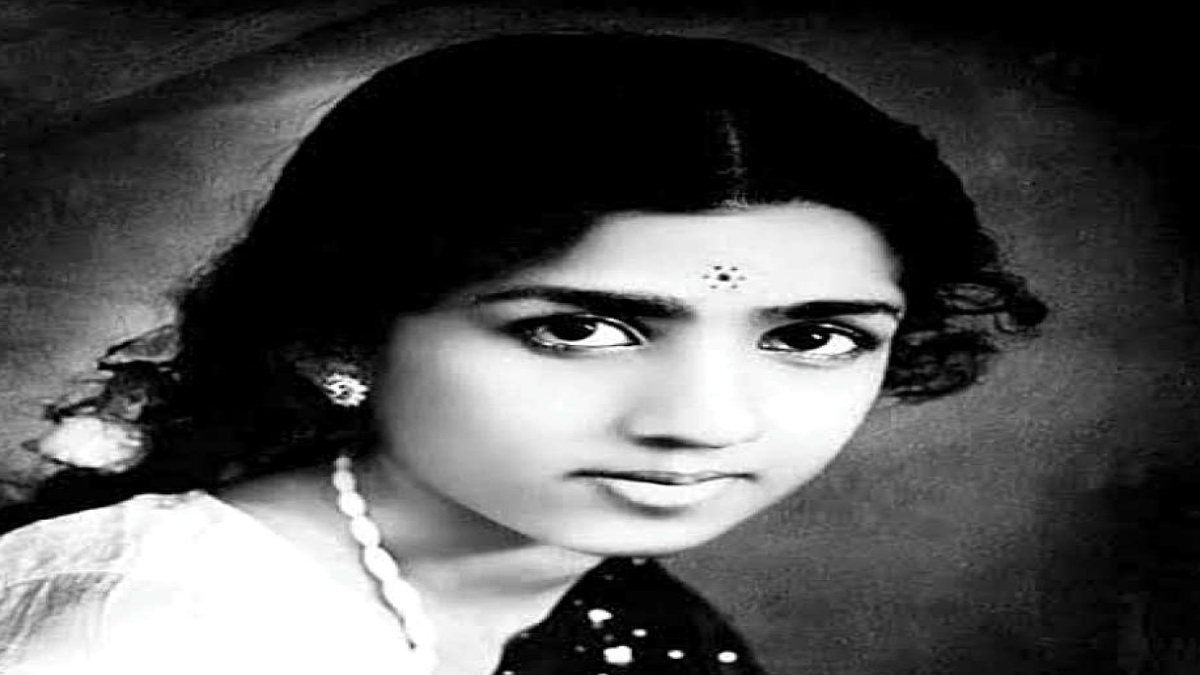


The voice of Lata Mangeshkar, the nightingale of India fell into permanent silence at 8.12 am on 6 February 2022 at Breach Candy Hospital, Mumbai, but she will continue to rule the hearts of billions across the world through the wordings of her favourite song: Hamare baad ab mehfil mein afsane byan honge, baharen hum ko dhoondengi, na jaane hum kahan honge (film Baagi, 1953).

Lata was born as Hema Mangeshkar on 28 September 1929 in Indore (MP) to a Gujarati mother Shevanti and a Marathi and Konkani musician and dramatist father, Deenanath Mangeshkar, who later renamed her Lata after a female character, Latika, in one of his plays. Originally, the family surname was Bhatt, but since her paternal grandfather Ganesh Bhatt was a priest who performed the abhishekam at the Mangueshi temple in Goa, her father Deenanath adopted the surname Mangeshkar.
Lata’s first music tutor was her father, whom she loved to the last breath of her life. She went to school just for one day because she was angry that the school authorities refused to allow her to bring her four years younger sister Asha to school along with her. She started working as a performer in her father’s Marathi musical plays at the mere age of 5. When her father died on 24 April 1942, Lata was only 13 years old. The full responsibility to run the family of 3 younger sisters Asha, Meena, Usha and brother Hridaynath and mother fell upon her. At that juncture her father’s close friend Master Vinayak (father of actor Baby Nanda), who was the owner of Navyug Chitrapat Movie Company helped Lata in building her career as a singer and actress. Her first Hindi song was, “Mata Ek Sapoot Ki Duniya Badal De Tu” for the Marathi film Gajaabhaau (1943). She sang “Paa Lagoon Kar Jori” for Vasant Joglekar’s Hindi-language movie Aap Ki Seva Mein (1946), which was composed by Datta Davjekar. Lata also played minor roles in Vinayak’s first Hindi-language movie, Badi Maa (1945) singing a bhajan, “Maata Tere Charnon Mein.”
Another tragedy fell on Lata’s life when Master Vinayak died on 19 August 1947, when Lata was merely 16 years old. She had to find new avenues for employment to support her family. That was the hardest period of her life, but God had sent music director Ghulam Haider to carve her musical career. He mentored her, but when he introduced her to sing his hit film Shaheed (1948) the producer S. Mukerjee rejected her voice, calling it too thin because that was the era in which heavy voices like Shamshad Begum, Noorjehan, Surinder Kaur were preferred. An annoyed Ghulam Haider gave her chance in his film Majboor (1948) in which she sang six songs including the hit song “Dil mera toda, mujhe kahin ka na chhodha.” After Ghulam Haider’s migration to Pakistan it was music director Khemchand Parkash who gave her career a big leap in film Ziddi (1948) with the song “Chanda re ja re ja re” picturised on Kamini Kaushal, and in the film Mahal (1949) with the songs “Aayega aana wala” and “Mushkil hai bahut mushkil”. In fact the year 1949 changed her fate and her popularity grew due to hit songs of Mehboob’s film Andaz (Uthaye ja unke sitam) composed by Naushad; Chale jaana nahin and duet Chup chup khadhe ho composed by Husanlal Bhagat Ram (Badi Behan; songs of Raj Kapoor’s film Barsaat; Lara lappa laara lappa layi rakhda composed by music director Vinod for film Ek thee ladki.
Lata became the ruling queen of songs after that and became the first choice of all famous music directors like Anil Biswas, Sham Sunder, S.D. Burman, C. Ramchandra, S.N. Tripathi, Khayyam, Sardar Malik, Vasant Desai, Chitragupta, Ghulam Mohammad, Madan Mohan, Shankar Jaikishan, Jaidev, Roshan, Salil Chowdhury, Hemant Kumar, Jaidev. Her journey of 70 years of playback singing continued with later music directors like Kalyanji Anandji, Ravi, Usha Khanna, Lakshmikant Pyarelal, Ravinder Jain, Bappi Lahiri and further till the modern era. She worked with the children of her initial composers, like R.D. Burman, Rajesh Roshan, Anu Malik, Anand-Milind. There are innumerable latest music directors with whom Lata worked. In fact, she worked with almost all the music directors except O.P. Nayyar.
Lata’s favourite singer was K.L. Saigal from her childhood till her death.
Lata Mangeshkar composed music for the first time in 1955 for the Marathi movie Ram Ram Pavhane. Later in the 1960s, she composed music for 5 Marathi films. Lata Mangeshkar had produced four films. She also produced 4 movies: in 1953, Vaadal (Marathi), Jhaanjhar (Hindi), co-produced with C. Ramchandra; in 1955, Kanchan Ganga (Hindi) and Lekin (Hindi).
Lata won innumerable awards including the Bharat Ratna, Padma Vibhushan, Padma Bhushan and the Dadasaheb Phalke Award. In 1984, the state Government of Madhya Pradesh instituted the Lata Mangeshkar Award in her honour. Lata Mangeshkar was the first Indian singer to stage a concert at the Royal Albert Hall, London, in 1974. She is survived by four siblings: Meena Khadikar, Asha Bhosle, Usha Mangeshkar and Hridaynath Mangeshkar